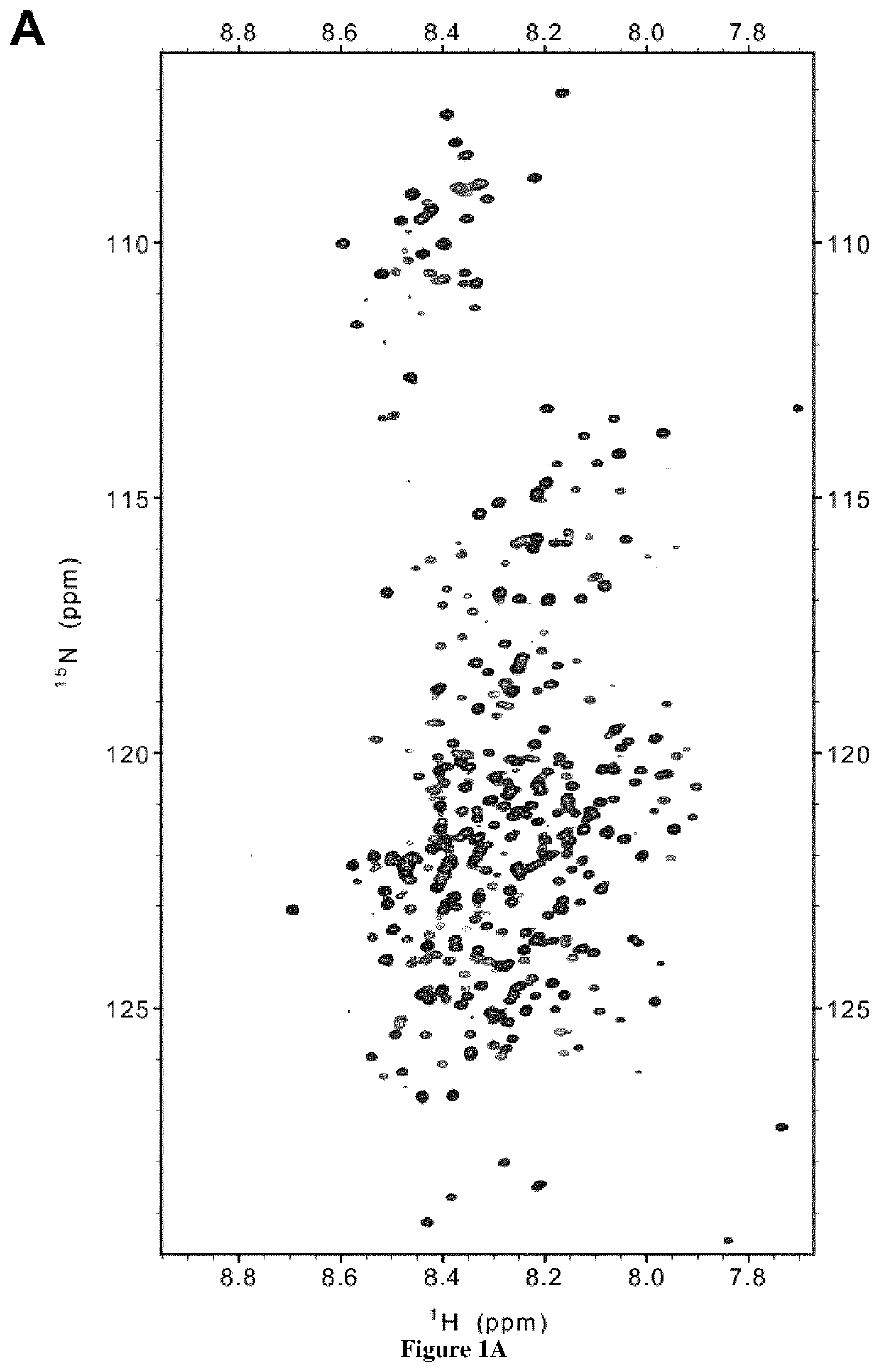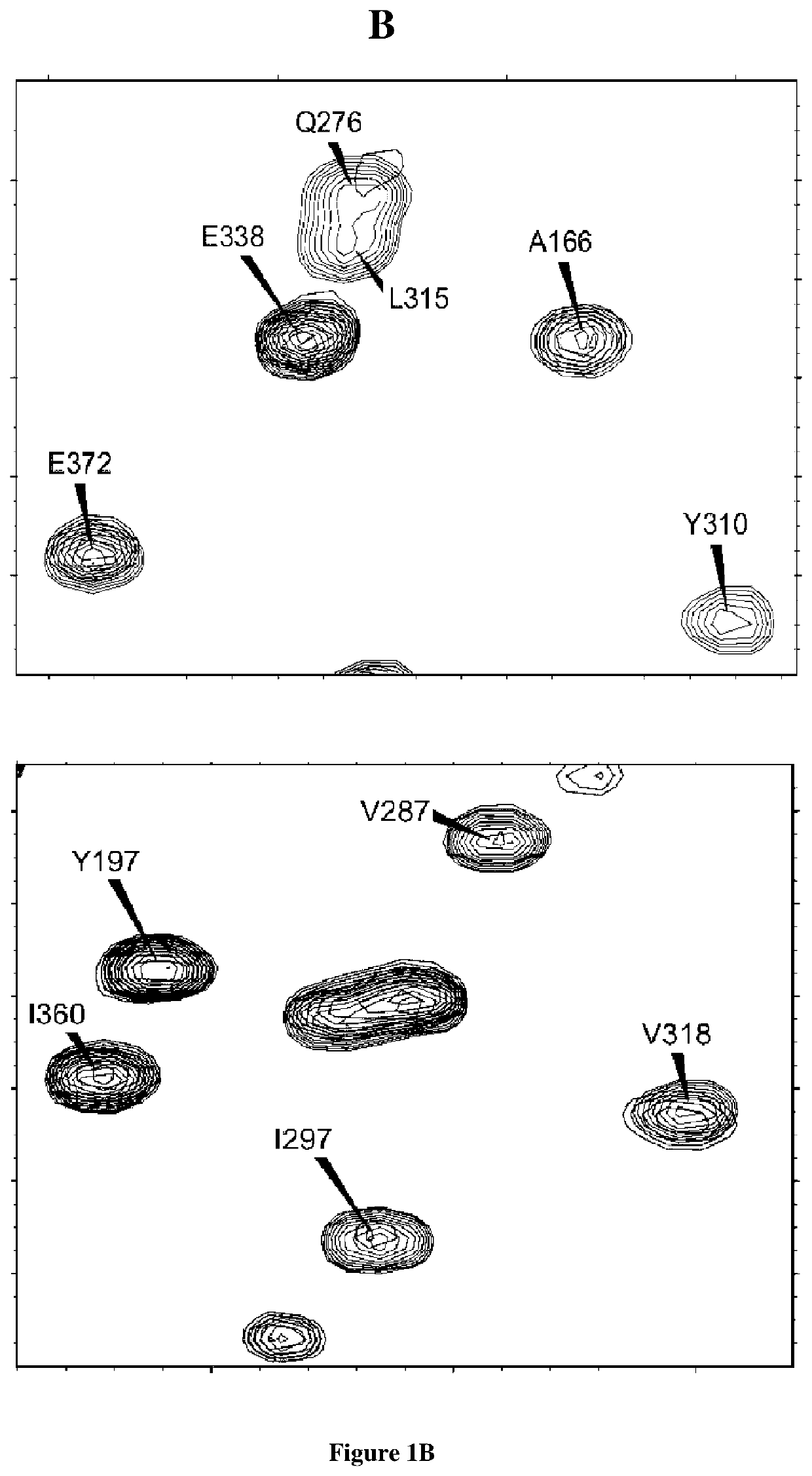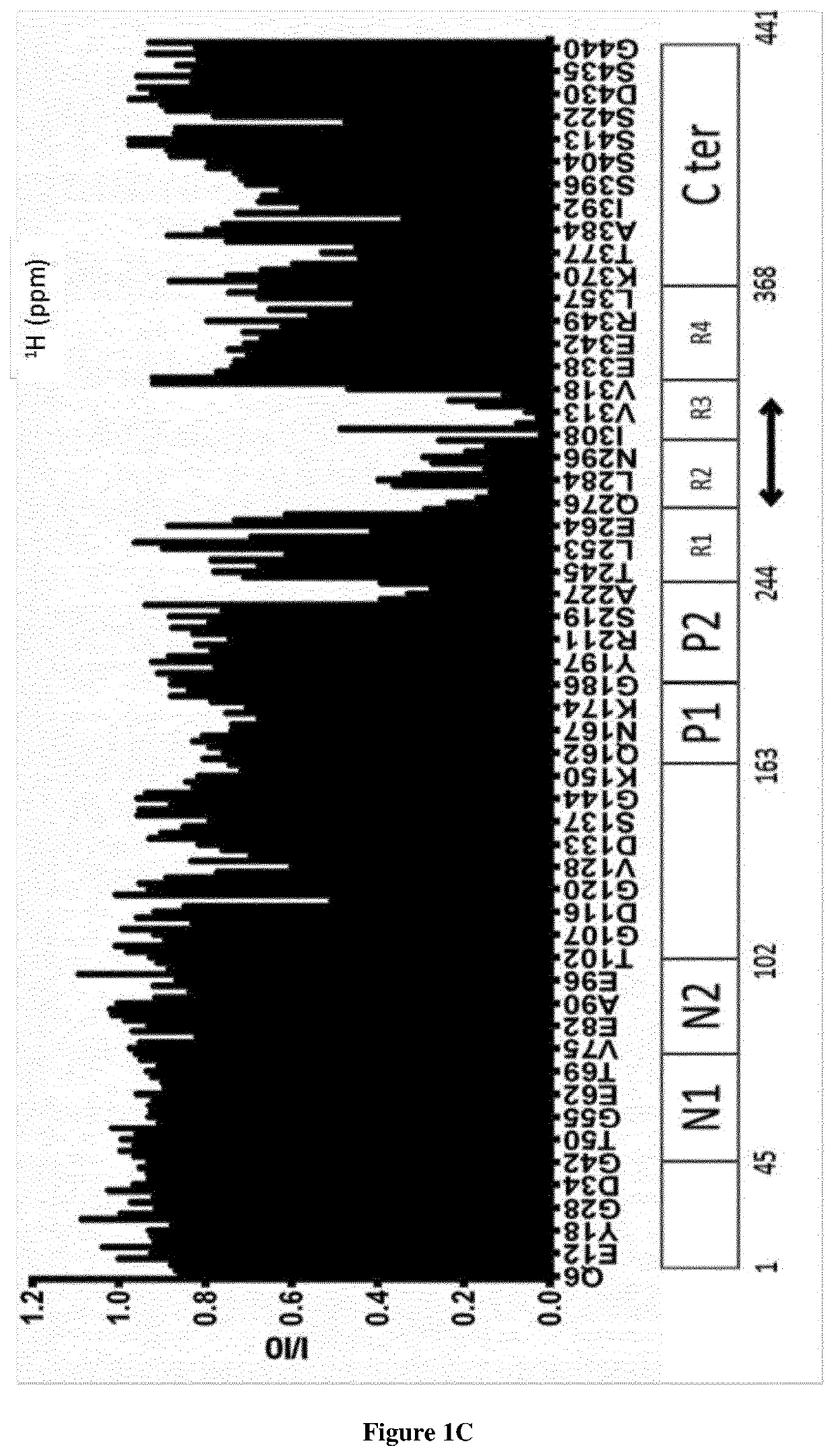New anti tau svqivykpv epitope single domain antibody
a single-domain antibody and tau technology, applied in the field of new single-domain antibodies, can solve the problems of limited success of intervention strategies based on ab hypothesis, phfs formation disrupting cellular functions, and the related search for in-depth understanding of tau physiopathology and effective therapies remains a challenging task
- Summary
- Abstract
- Description
- Claims
- Application Information
AI Technical Summary
Benefits of technology
Problems solved by technology
Method used
Image
Examples
example 1
N OF VHHS TARGETING TAU)
[0147]Materials and Methods
[0148]Screening and Selection of VHHs Directed Against Tau Protein
[0149]Recombinant Tau protein was biotinylated using EZ-Link™ Sulfo-NHS-Biotin (Thermo Fisher Scientific) using manufacturer conditions except for a two-fold molecular excess of Sulfo-NHS-Biotin. The unreacted Sulfo-NHS-Biotin was eliminated using Prepacked Columns Sepadextran™ 25 Medium SC (Proteigene). The Nali-H1 library of VHHs was screened against the recombinant biotinylated-Tau as described previously44. Briefly, biotinylated-Tau protein was bound to Dynabeads™ M-280 Streptavidin (Invitrogen) at each round of selection, at a concentration gradually decreased: 100 nM in round1, 50 nM in round 2 and 10 nM in round3. Biotinylated-Tau binding was verified by Western Blot using Streptavidin Protein, HRP (Thermo Fisher Scientific). 3×1011 phages of the Nali-H1 library were used in the first round of selection. After the third round, 186 clones were randomly picked an...
example 2
OF Z70)
[0173]Materiel and Methods
[0174]Optimization of VHH Z70
[0175]VHH Z70 was amplified from pHEN2 plasmid using Taq polymerase with 14 mM MgCl2 and 0.2 mM MnCl2 and a modified nucleotide pool according to48. The amplified cDNAs were transformed in yeast Y187 strain, together with a digested empty derivative of pGADGH vector 49, allowing recombination by gap repair in the vector. The VHH cDNAs are expressed as preys, with a C-terminal Gal4-activation domain fusion (Gal4AD-Z70). A library of 2.1 million clones was obtained, collected and aliquoted. Tau variant 0N4R isoform (NM_016834.4) was expressed as bait with an N-terminal fusion with lexA (Tau-LexA) from pB29 vector, which is derived from the original pBTM11650. The library was screened with 0.5 mM 3-aminotriazol at saturation, with 40 million tested diploids, using cell-to-cell mating protocol51. Most redundant mutants with 1 to 4 mutations were selected for further analysis.
[0176]Surface Plasmon Resonance Experiments
[0177]Af...
example 3
ON OF TAU AGGREGATION)
[0181]Materiel and Methods
[0182]In Vitro Kinetic Aggregation Assays
[0183]Tau 2N4R aggregation assays were performed with 10 μM Tau and with increasing concentrations of VHHs (between 0 and 10 μM) in buffer containing 50 mM IVIES pH 6.9, 3 mM NaCl, 2.5 mM EDTA, 0.33 mM freshly prepared DTT, 2.5 mM heparin H3 (Sigma-Aldrich) and 50 μM Thioflavin T (Sigma-Aldrich), at 37° C. Experiments were reproduced 3 times in triplicates for each condition. The resulting fluorescence of Thioflavin T was recorded every 5 min / cycle within 200 cycles using PHERAstar plate-reader. The different measures were normalized in % of fluorescence, 100% being defined as the maximum value reached in the positive Tau control, in each experiment.
[0184]Transmission Electron Microscopy
[0185]The same samples from the aggregation assays were recovered and a 10 μl sample of each Tau:VHH ratio 1:1 condition was loaded on a formvar / carbon-coated grid (for 5 min and rinsed twice with water). After d...
PUM
| Property | Measurement | Unit |
|---|---|---|
| Fraction | aaaaa | aaaaa |
| Fraction | aaaaa | aaaaa |
| Fraction | aaaaa | aaaaa |
Abstract
Description
Claims
Application Information
 Login to View More
Login to View More - R&D
- Intellectual Property
- Life Sciences
- Materials
- Tech Scout
- Unparalleled Data Quality
- Higher Quality Content
- 60% Fewer Hallucinations
Browse by: Latest US Patents, China's latest patents, Technical Efficacy Thesaurus, Application Domain, Technology Topic, Popular Technical Reports.
© 2025 PatSnap. All rights reserved.Legal|Privacy policy|Modern Slavery Act Transparency Statement|Sitemap|About US| Contact US: help@patsnap.com



